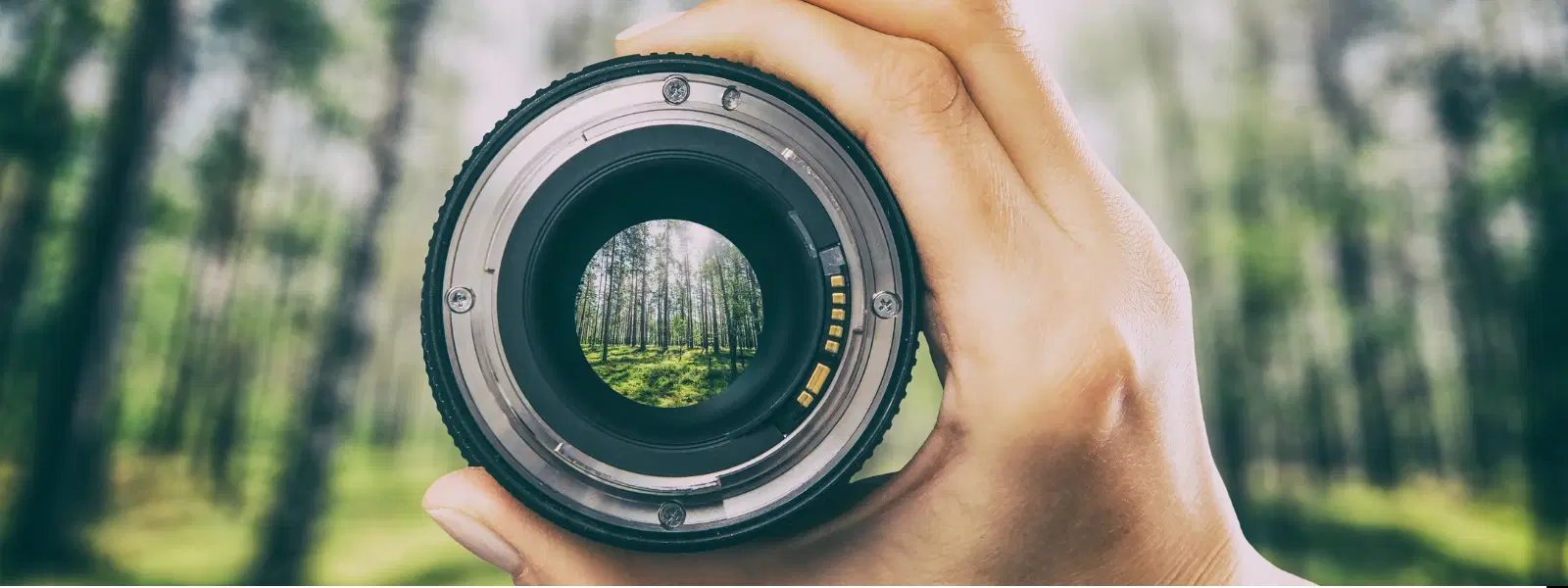
Consumer Electronics
•03 min read
Capturing the perfect shot of a majestic eagle in flight or a tiger in its natural habitat requires more than just skill—it demands the right equipment. At the heart of wildlife photography lies the camera lens, a tool that can transform a simple snapshot into an extraordinary story of nature. This blog answers your common questions about choosing the right wildlife camera lens, exploring lens types, focal lengths, budget-friendly options and much more.
When it comes to wildlife photography, certain key features set a great lens apart. The focal length plays a crucial role; a longer reach is essential to capture distant subjects without disturbing their natural habitat. Aperture size is equally important, especially in low light conditions or at dawn and dusk when most wildlife is active. Telephoto lenses are highly favoured because they allow photographers to maintain a safe distance while capturing vivid details. Additionally, the choice between zoom and prime lenses should be carefully considered based on your shooting style and needs.
Diversifying your gear can make all the difference. Telephoto lenses, such as the 600mm variant, offer exceptional reach to capture far-off subjects, while zoom lenses like the 70-200mm provide flexibility for different distances. Each type comes with its set of pros and cons: telephoto lenses often deliver excellent sharpness but can be on the heavier side, whereas zoom lenses offer convenience and versatility suitable for dynamic outdoor settings.
Several factors influence your choice of a wildlife camera lens. The distance from your subject is paramount—focal lengths ranging from 200mm to 600mm can cover a wide variety of scenarios. Lighting conditions also play a significant role; lenses with wider apertures perform better in low light, ensuring clarity even during dusk or overcast conditions. Portability is another aspect to keep in mind. A lighter, compact lens can be easier to handle during long outdoor shoots, letting you focus on capturing the perfect moment without excessive fatigue.
For those seeking high performance, popular options include models like the Canon RF 100-400mm f/5.6-8 IS USM, the Sony FE 200-600mm f/5.6-6.3 G OSS and the Sigma 150-600mm f/5-6.3 DG OS HSM | S. These lenses are celebrated for their excellent image quality and versatility across a range of scenarios, making them the best lens for wildlife even in challenging environments. They are ideal when you need that extra detail in your outdoor shots while keeping the equipment reliable and robust.
Not every wildlife photographer needs a high-end lens to get started. Affordable options like the Tamron 18-400mm f/3.5-6.3 Di II VC HLD and the Sigma 100-400mm f/5-6.3 DG DN OS Contemporary offer a balance between cost and performance. These lenses are particularly valuable for those beginning their journey in wildlife photography and looking to maintain a quality output without overspending.
There are several practical approaches to stay within budget. One effective method is considering the purchase of pre-used lenses from reputable sellers. Alternatively, you might look into renting high-end gear for special projects. Keeping an eye on seasonal sales or dedicated online deals can also prove fruitful. No matter your budget, strategic choices ensure you get the most value without compromising the quality of your wildlife photography equipment.
The right lens is only part of the equation. Being well-equipped with stabilisation tools such as tripods, monopods, and gimbal heads is essential for steady shots, especially when using longer focal lengths in windy environments. Alongside your camera, considering a system that pairs seamlessly with wildlife lenses—like compatible bodies in the Nikon Z mount system—can further enrich your photographic experience.
To ensure your lens lasts and continues performing at its best, regular maintenance is key. Gently cleaning the lens with a suitable cloth, protecting it from dust and moisture, and storing it properly when not in use are simple yet effective steps. This care extends the life of your equipment, making sure you can always rely on your gear in the great outdoors.
Expert Tip: The Focal Length Sweet Spot for Wildlife Photography
Did you know that a 300-600mm focal length range is considered the sweet spot for wildlife photography? This range strikes the ideal balance between reach and clarity, enabling detailed captures of distant subjects without compromising on portability.
The best lens depends on your needs, but popular options include the Sony FE 200-600mm and Canon RF 100-400mm for their versatility and image quality.
Yes, it works well for medium-range subjects and is ideal for beginners or those photographing in areas where wildlife is closer.
Absolutely. A 600mm lens is perfect for capturing distant subjects with exceptional detail, especially in open landscapes.
Zoom lenses offer versatility across varying distances, whereas prime lenses often deliver superior image quality and wider apertures. Choose based on your shooting style and requirements.
In summary, choosing the right wildlife camera lens is essential to elevating your photography skills. With a clear understanding of lens types, focal lengths and budget options, you can create stunning images that capture the essence of nature. Pair these lenses with essential complementary gear to ensure each shot is as sharp and impactful as you envision. As you refine your techniques, remember the advantages offered by platforms such as Tata Neu, where every shopping experience is not only seamless but rewarding with NeuCoins. Here, shopping smartly becomes a part of your journey—earning NeuCoins and enjoying special benefits that enhance your overall experience.